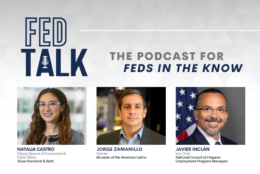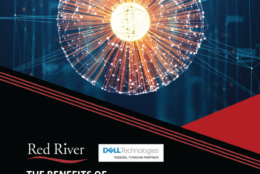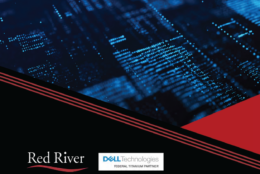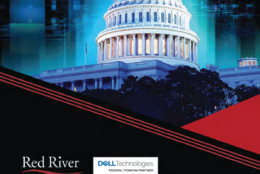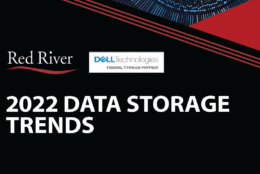SDFM The Business of Defense
-
This Hispanic Heritage Month, FEDtalk is recognizing efforts to increase Hispanic/Latino representation in government and government efforts to elevate Hispanic/Latino stories to the public.
October 07, 2022 -
In the federal software world, supply chains are often extensive. How can an agency ensure its risk assessments can adequately gauge potential threats? The Federal Drive’s Tom Temin asks just that of RiskRecon cyber expert John Ehret.
October 06, 2022 -
Sheryl Gay Stolberg with The New York Times and Victoria Knight with Axios examine how the November results will likely impact health care policy in the next two years and beyond.
October 06, 2022 -
Using technology and data analytics to improve the ability for employees in government to create great CX is 50% of the equation, explains Genesys Public Sector CTO Steven Boberski. He sits down to talk all things CX with The Federal Drive’s Tom Temin.
October 05, 2022 -
Thunderdome must clear an operational assessment and red team tests. DISA also faces the hurdles of scaling a new security tool and processes across enterprise DoD networks. We talk with DISA’s Drew Malloy about the challenges ahead.
October 05, 2022 -
During this exclusive webinar, moderator Jason Miller will discuss how agencies can start collecting data and look at process improvements in healthcare with agency and industry leaders.
October 04, 2022 -
“We found out that the shipyards oftentimes were competing with one another, buying parts from the same commercial vendor to effect their availabilities,” Rear Adm. Peter Stamatopoulos, NAVSUP’s commander, said in an interview with Federal News Network.
October 03, 2022 -
Helping people and creating great teams is “about bringing a team together, harnessing diversity of thought, diversity of background," Peraton's Szu Yang says.
October 03, 2022 -
During this webinar, you will gain the unique perspective of top government security experts from the Cybersecurity and Infrastructure Security Agency, Environmental Protection Agency, Department of Justice, Department of Health and Human Services and industry leaders.
October 03, 2022 -
During this exclusive webinar, moderator Jason Miller will discuss how data-driven insights and automation can improve customer experience with agency and industry leaders.
October 03, 2022 -
As data storage and management becomes more costly and complex, many organizations, including Federal agencies, are moving toward hyperconverged infrastructures vs. converged infrastructures. Hyperconverged infrastructures can provide answers to the “big data” problem, increasing data accessibility while also reducing costs. But, of course, a hyperconverged infrastructure still comes with some potential challenges and drawbacks.
September 30, 2022 -
As threats become more sophisticated, data stores larger, and technology standards evolve, agencies need to keep pace to strengthen their security posture and mitigate risk. A great place to start is by taking a look at the data protection challenges facing security professionals and the cybersecurity trends driving investments in the U.S. Federal sector.
September 30, 2022 -
Updating IT infrastructure and server deployments can make the Federal government more efficient and cost-effective. Private businesses are increasingly adopting remote and hybrid workforces, which makes them more attractive places to work for many employees. Federal agencies may struggle to attract or retain top talent with clunky, outdated hardware and software.
September 30, 2022 -
2022 brings with it an extraordinary amount of data. It’s believed that the world is now producing and consuming close to 100 zetabytes of data every year. How are companies managing this data? How can companies glean actionable insights from the data they have — and secure and protect the data that they need? Find out in this ebook.
September 30, 2022 -
Jonah Kearns is a young man at 20-years-old, but his job has allowed him to see and do things that most people won't experience in an entire lifetime.
September 30, 2022

